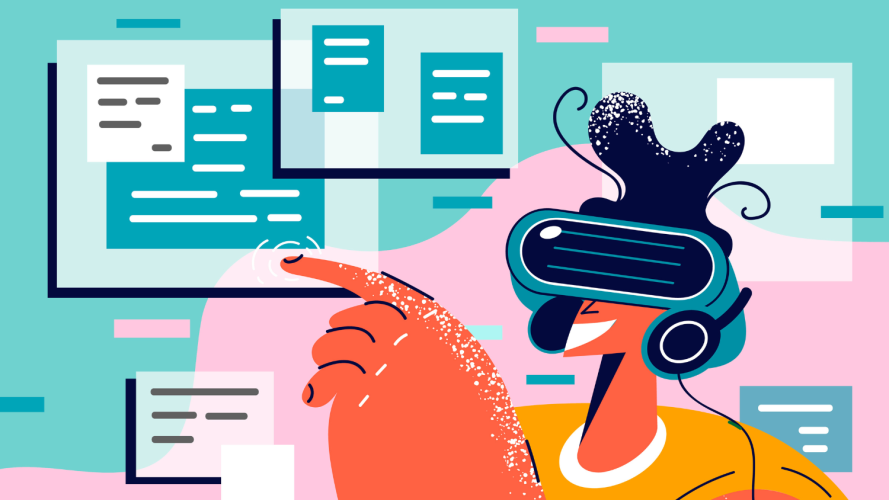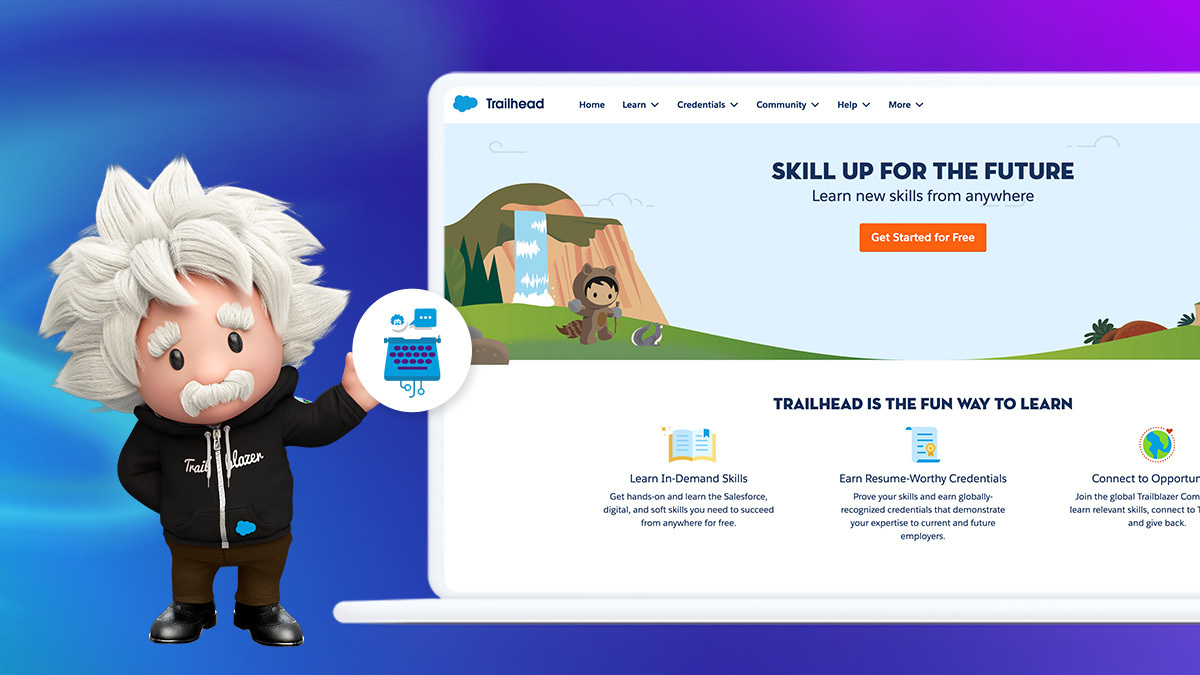All the headlines touting the transformative powers of generative AI are, understandably, making some designers nervous. If they’ve had little or no experience working with AI or large language models (LLMs), it can be especially daunting. But, designers are actually well-positioned to meet this moment. Many just don’t know they have design skills that translate into AI skills.
Some core design skills that underpin strategies for generative AI include:
- Interaction design
- Systems design
- Human-centered design
- Ability to communicate ideas
Designers are more ready than they think and they can feel confident about the value they bring to AI.
Say hello to AI Cloud
You need real-time access to automation across your business to make AI work for you. Meet the end-to-end solution for every business to get started now.



Salesforce designers who work on Salesforce Artificial Intelligence, refer to generative AI as a “word calculator” that can produce an output optimized for users. Framing the design and AI relationship this way makes it easier to understand how those who have a design background can make an impact. Plus, it’s especially worth calling out these transferable skills now when many companies are scrambling to build their generative AI teams.
Transferable design skills
Designers need to tap their existing superpowers, starting with these four design skills, and understand how they can inform AI innovations.
1. Interaction design improves personalization
Interaction design is a specialty within user experience that focuses on understanding the goals, context, and behavior of the person trying to complete a task. Designers use this knowledge to inform everything they create. This may include navigation structures, information design, click paths, and micro-interactions.
Today, personalized interactions are more possible with AI because it can get more granular about the user and the context. Increasingly specific commands, context, goals, and expectations equate to better results. When AI creates an email from a salesperson to a potential customer, for example, it needs to know more about the interaction including:
- Who’s communicating with whom
- How they know each other
- What their current sentiment is for one another
- Any additional constraints such as economic headwinds or industry considerations
Good questions to ask, include:
- What should this interaction inspire?
- Is the output to one person or many?
- Does it occur on a platform?
- Does it create code that makes an action?
If businesses want to get up to speed fast, they’ll need someone who can help them create these more personalized interactive user journeys – and do it at scale.
2. Systems design scales solutions
A design system is important to designers, because it creates standards that increase trust with users and makes interfaces easier to navigate. AI can augment that expertise in systems design – the practice of designing with scalable elements to improve the user experience.
The Salesforce Lightning Design System (SLDS) offers a library of design patterns. A potential application of AI would be to prompt it to ensure a design adheres to those patterns or brand themes, and to avoid harmful choices (also known as anti-patterns) that go against best practices.
When working with AI, designers can iterate along the way, tweaking the interface to meet user needs. This helps ensure users have an experience that feels familiar and easy to navigate.
Technology is now able to amplify existing design systems, which are essentially databases that models can reference. The same is true for design taxonomies and pattern libraries.
3. Ability to communicate ideas
Currently, the method for interacting with AI is language-driven. Part of the designer’s job is to communicate their visions to stakeholders and gain alignment.
Think of a design review with the product managers and developers. Whether it occurs in person, in Figma, or via Slack, reviews are opportunities for designers to articulate what a given experience should be like and why. It’s a muscle they’ve already built. Designers are also adept at explaining their process.
They might show a design and state what assumptions they made while creating it. Assumptions might include, for example, that French is a user’s first language for a regional feature. Or that users are over the age of 40 for a feature with larger text. This level of transparency and background detail can be useful to AI.
4. Human-centered design focuses on the user
A process that begins with user needs is known as human-centered design. It takes into account if an idea is desirable to users and how feasible it is to create. When done successfully, this creative problem solving can increase product adoption and customer satisfaction. Designers with this skill know that it begins with discovery. Asking the right questions can lead to building the right solution.
As large language models proliferate, it will be important for designers to help remind product teams to be human-centered.
Designers are assets
Connect with your AI engineer, leader or data scientist. Let them see you as an asset who can help them think more critically by asking questions such as:
- What about AI keeps you up at night?
- Have you considered the ideal user experience?
- What are the datasets grounding on and are those complete?
- Can you show me the AI tools we have?
- What anti-patterns do we want to consider?
This line of inquiry can orient those leading AI to think with a design lens, to include your unique perspective in the creation process, or to defer to your knowledge. If you’re job searching, ask interviewers the same.
Designers have an advantage and should claim their role in the AI arena today.




































